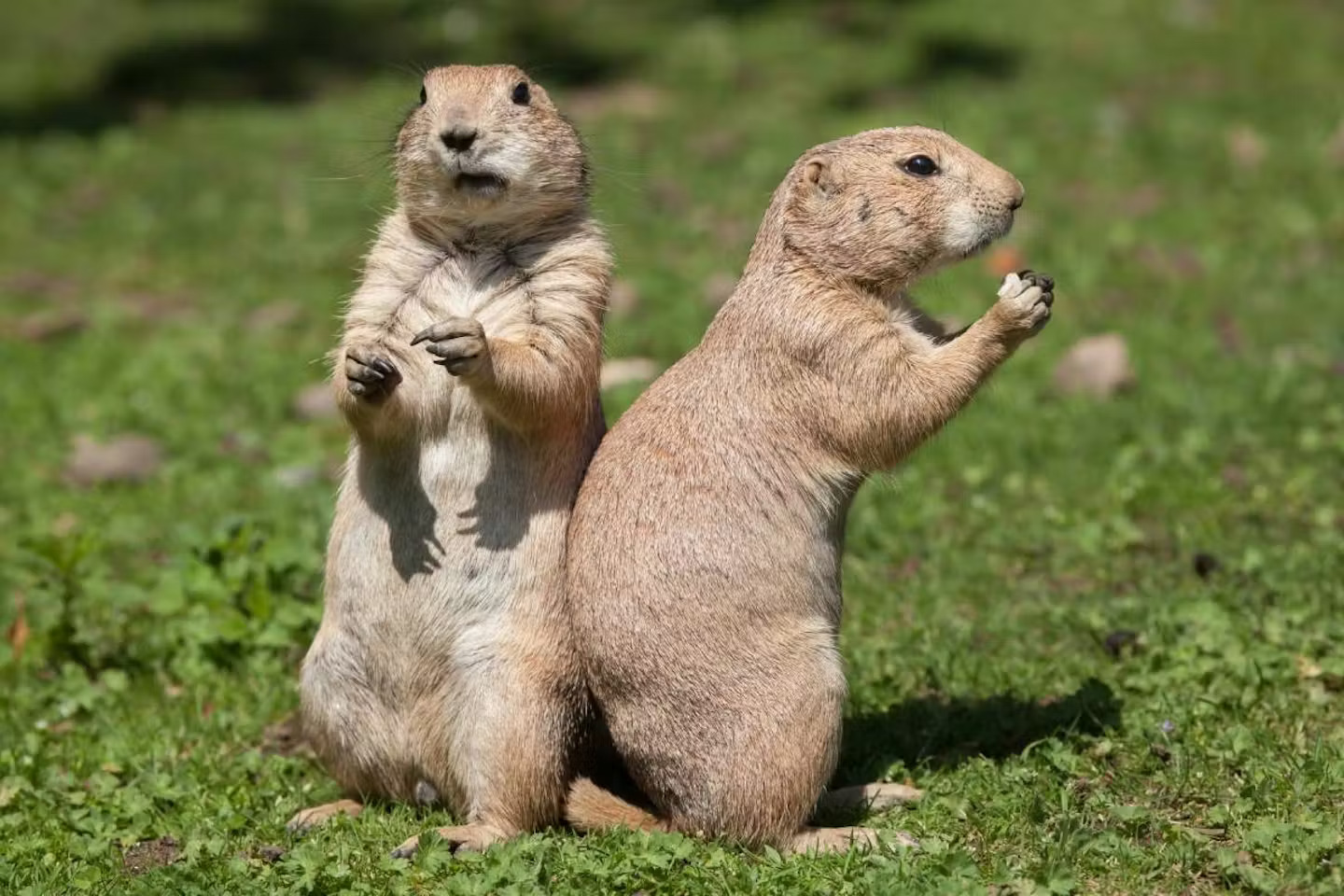Where Can You Find a Black-Tailed Prairie Dog?
-

- by Admin
- Aug 24, 2024

Prairie dogs reside in complex burrow systems. Entrances are easily spotted by the raised mounds of loose soil. These mounds allow a higher vantage point for sentries, or lookouts, to spot predators.
Small close-knit families called coteries compose the base of prairie dog social structure. Coteries consist of an adult male, one or more adult females, and their young offspring. Groups of neighboring coteries form a prairie dog colony.
When a predator is near, communication among the prairie dogs is vital. Using a repetitive series of warning barks, prairie dogs can provide detailed descriptions of a predator by varying the frequency and pitch of their barks. For example, prairie dogs can communicate not just that the predator is a human, but also whether the human is short or tall.
Prairie dog performing a jump-yip callTheir barks also indicate the location of the predator. All members of the colony remain outside the burrow to keep an eye on the threat. If they were to all retreat into the burrow, the predator would simply attack when a prairie dog poked its head of out the entrance to check if the coast was clear. In this way, their system of warning barks has proven to be most successful.
Prairie dogs also perform jump-yip calls, in which they stand on the mound, throw their head back, and let out a high-pitched bark, sometimes evening toppling onto their backs due to the exertion.
What Black-tailed Prairie Dogs Eat
Black-tailed prairie dogs feed on grasses, sedges, forbs (broad-leafed vegetation), roots, and seeds.
Prairie Dogs are a Keystone Species
Black-tailed prairie dogs are a keystone species. They play an integral role in promoting animal and plant diversity in the Great Plains. Without them, life on the plains would be vastly different.
Prairie dogs keep vegetation short, fast-growing, and full of nutrition. Their digging action churns up soil like a plow, allowing for more fertile plant life. This in turn draws other wildlife like pronghorns, bison, and rabbits to the area to graze.
Prairie dog colonies also make suitable habitats for other animals. Their burrows sometimes become homes for rabbits, salamanders, snakes, and burrowing owls. In addition, mountain plovers prefer the areas of clipped grass for nesting.
Finally, prairie dogs provide an ample food source for golden eagles, hawks, swift foxes, coyotes, badgers, and endangered black-footed ferrets.
0 Comments:
Leave a Reply